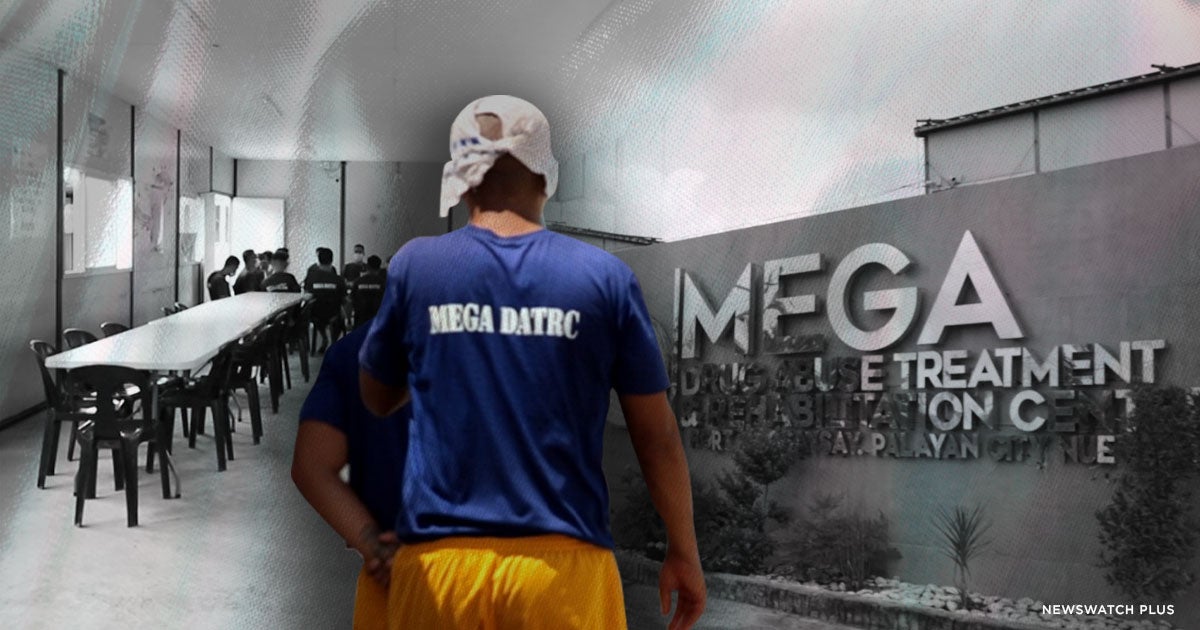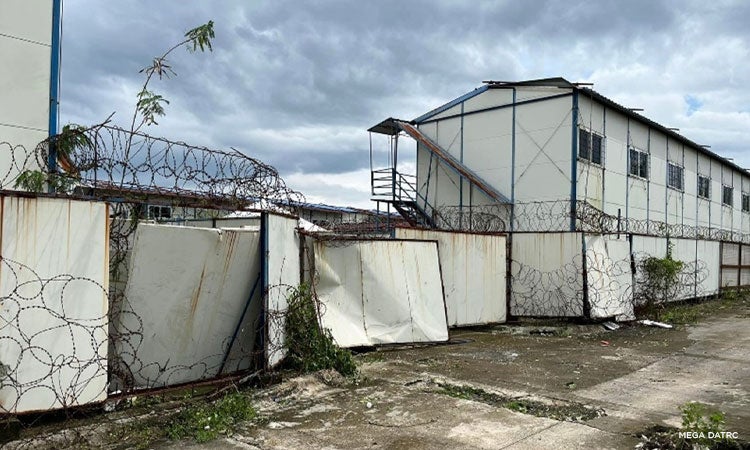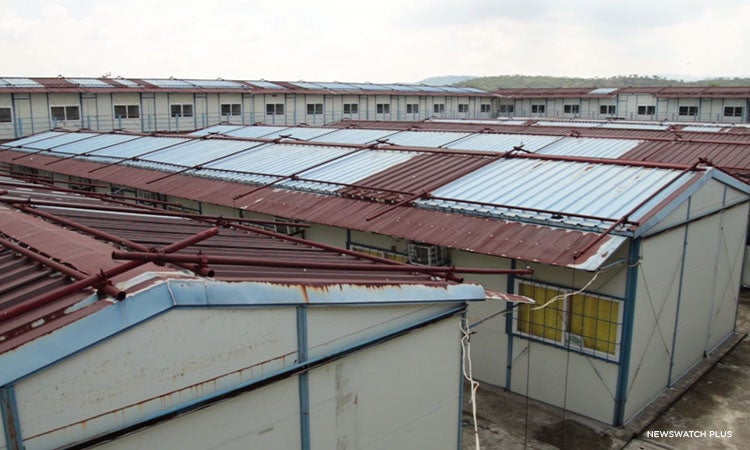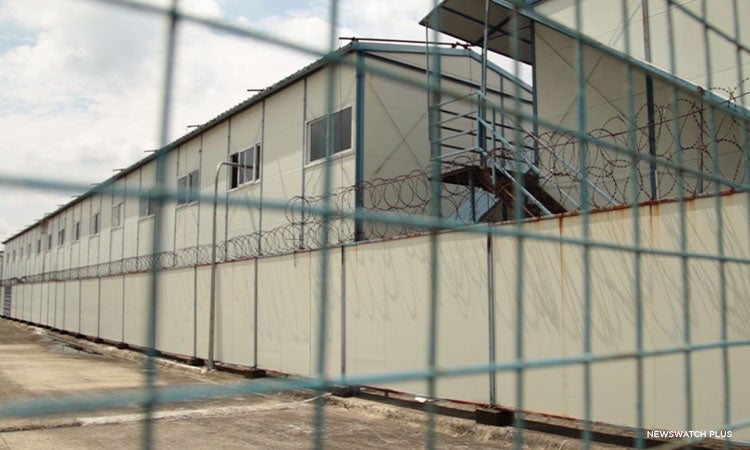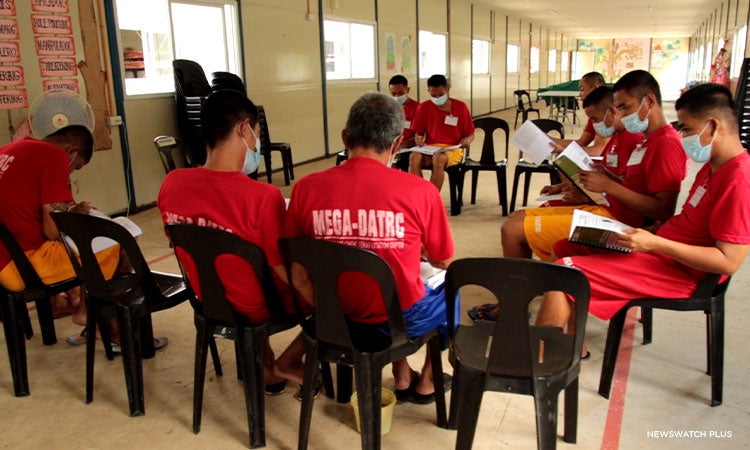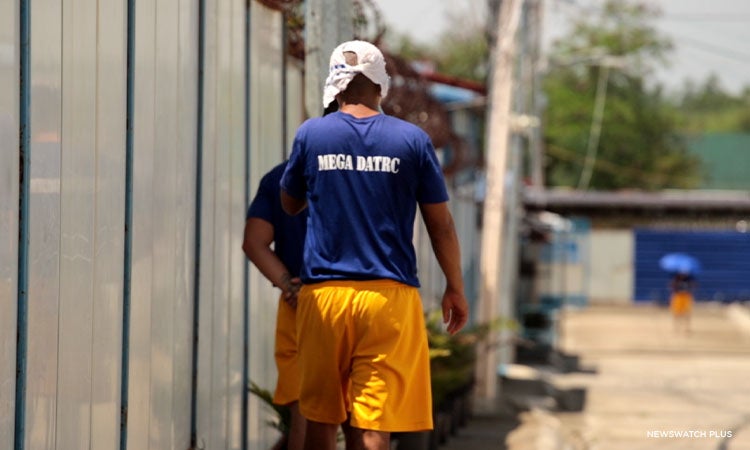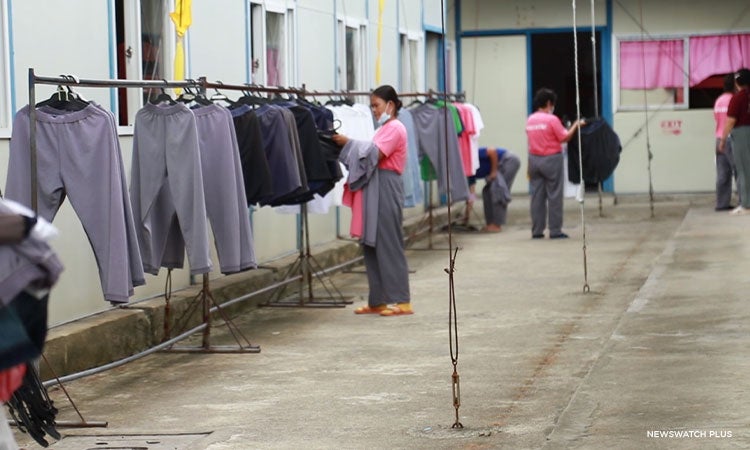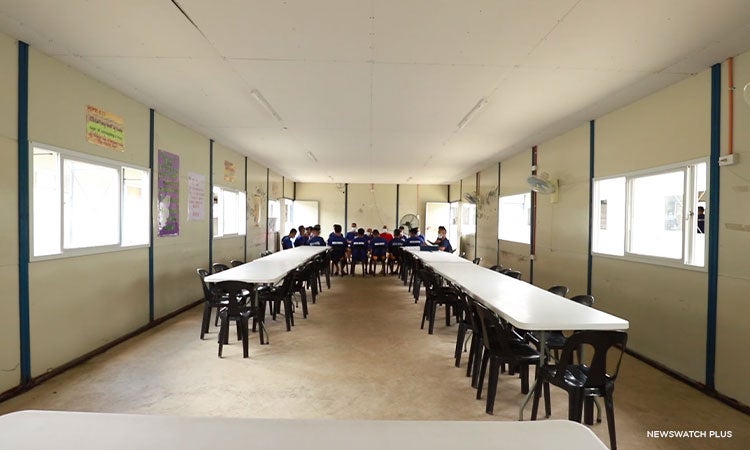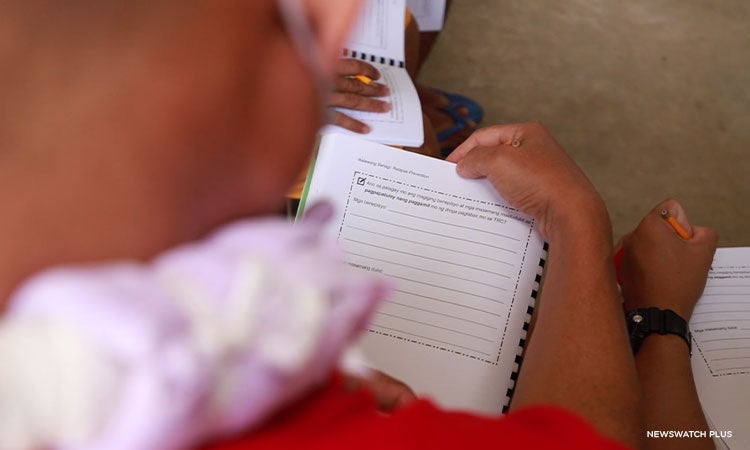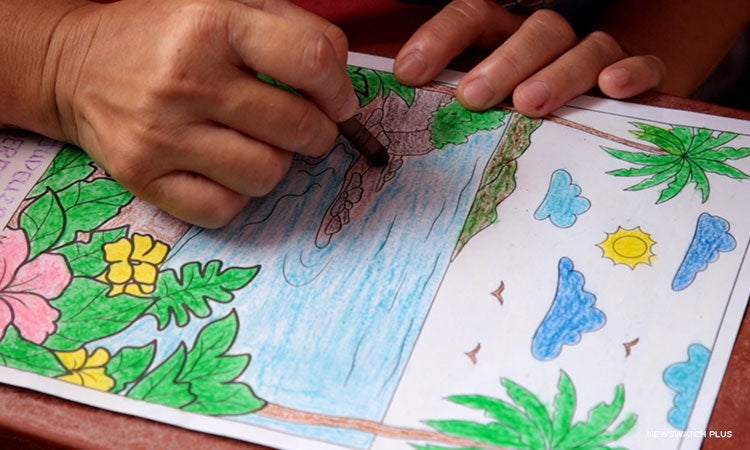Palayan City, Nueva Ecija, Philippines — On a sunny midday, Joshua* brought his booklet to a meeting with a group of men in blue shirts, some in red. They formed a circle inside a large function room. They chose to sit near the wall.
Among the discussion items — the benefits of avoiding illegal drugs.
Far from his home in Mariveles, Bataan, Joshua, 41, and 186 other so-called “residents,” were determined to finish their journey at the Mega Drug Abuse Treatment and Rehabilitation Center (DATRC) in Sta. Rosa, Nueva Ecija.
After another relapse, Joshua needed rehabilitation for the eighth time. His admission was for three months.
“Napunta ako ng Mega dahil naniniwala ako na TRC ang makakatulong sa akin para sa recovery ko,” he told NewsWatch Plus. He said the therapeutic community would help them recover lost morals and discipline due to drug addiction.
[Translation: I came to Mega because I believe that TRC will help me in my recovery.]
Those with severe drug use — voluntarily or otherwise — seek help at the Mega DATRC inside Fort Magsaysay, a military camp.
It was built for 10,000 residents, but current occupants are far less than capacity.
Few occupancy
The Mega DATRC is almost a four-hour trip north of Metro Manila. Of the four phases, only two are in service.
The center houses male and female patients in separate areas. A resident herself, Maria*, 26, said patients take on jobs and other tasks. She said hers is to attend to the medical concerns of others.
She said the daily routine begins with morning meetings which, for her, is the most important for therapy.
“Napaka-blessed na nandito kami kasi para na rin sa sarili namin, para sa paggaling namin, para sa muling paghubog po namin sa sarili namin,” she said.
[Translation: It is a blessing to be in the facility. It’s for our recovery, our renewal.]
Then President Rodrigo Duterte vowed to rehabilitate thousands of drug offenders in the facility’s four phases.
Admissions peaked in 2018 and 2019, with at least 1,000 patients or a tenth of capacity, according to official data provided to NewsWatch Plus.
“During that time, kasagsagan ng drug war campaign, Mega, they [saw it as] a very big facility, all over the Philippines ang pasyente namin, as far as Region 13,” Dr. Nelson Dancel, the chief of the hospital, told NewsWatch Plus.
[Translation: During that time, at the peak of the drug war campaign, they saw Mega as a very big facility. Our patients came from all over the Philippines, as far as Caraga Region.]
But things have changed. As of December 2023, the Department of Health (DOH) said there were 33 government-owned drug treatment and rehabilitation centers across the country. Dancel said there were only 13 TRCs when the Mega DATRC was set up in 2016.
When the COVID-19 pandemic hit in 2020, admissions dwindled to less than 300 per year, according to the center’s data.
The DOH accreditation also directed the center to only have 225 beds, or nearly half of the initial 500-bed capacity in 2016.
Under a post-pandemic initiative, the Mega DATRC assigns three people inside a dormitory, instead of five or six. Empty rooms were converted into quarantine areas to isolate those with flu-like symptoms, and additional function rooms for activities.
“We can only manage Phase 1 and 2 depende sa plantilla natin [depending on our plantilla],” Dancel said.

From five or six patients, the Mega DATRC assigns three people inside a dormitory — applying lessons learned from the COVID-19 pandemic.
“We are being accredited by DOH [Department of Health], we stick sa [to] one is to 25, 225 beds, so dapat meron kaming [we should have] nine social workers…we are still going on sa [with our] hiring,” he also said.
The current 142-strong team, including plantilla and job order positions, is not enough to handle a fully-occupied 10,000-bed center.
The deal
Eight years into its existence, the Mega DATRC purpose remains unclear. In 2017, then Dangerous Drugs Board Chairman Dionisio Santiago said the facility was a mistake and impractical.
At the height of the pandemic, Phase 4 became a health site for patients. Phases 3 and 4 were eventually converted into military training facilities, Dancel said.
There was a suggestion under the Marcos administration to repurpose the center into a detention facility to decongest the National Bilibid Prison in Muntinlupa City.
Insofar as the Mega DATRC is concerned, it plans to maximize functional areas. Over the years, however, wear and tear is showing in some structures — dormitories in prefabricated structures usually from G.I sheets are weak against storms, Dancel said.
He admitted to NewsWatch Plus about limitations in the whole exercise.
“We are asking for a budget so that we can build concrete fixed structures…just in case may mga calamity pa, para matibay,” he said. “Kaya lang ang problema we are on a…usufruct lang kami dito parang you can use this area up to 2032 kasi nga this is a property of DND (Department of National Defense),” he said
[Translation: We are asking for a budget so that we can build concrete fixed structures, so that the facility can withstand calamities. The problem is that we are on a usufruct agreement and we can use this area up to 2032 as this is a property of DND.]
At the height of the bloody war on drugs, Duterte issued an executive order to establish the Mega DATRC in a military camp. The center, funded through the donation of a Chinese tycoon, was the first and last of its kind.
The deal states that the DOH can operate the facility in Fort Magsaysay until June 2032.
“After the expiration or termination of this agreement, the facilities of the Mega DATRC shall be automatically transferred to the AFP without need of demand and cost,” read a provision of the document provided to NewsWatch Plus.
Sought for comment, the Defense Department reiterated portions of the deed of usufruct. The agency said it “reserves the right to unilaterally terminate the agreement at any time in cases of military necessity or when the safety and security of Fort Magsaysay will be jeopardized or compromised.”
“The center’s facilities will be utilized by the AFP in accordance with the AFP Strategic Basing Plan approved by the DND, and the Revised Armed Forces of the Philippines Modernization Program,” the DND said in a statement sent through e-mail.
Evolved objective
With eight years left in its existence, the Mega DATRC must find a new home for clients mostly from Central Luzon, Metro Manila, and Calabarzon.
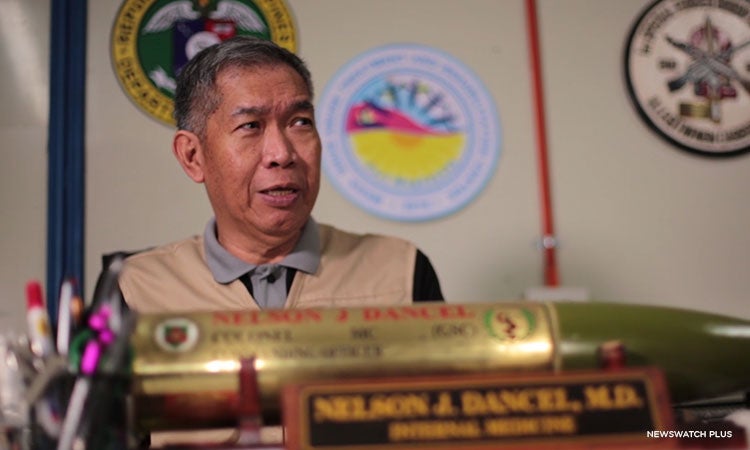
Dr. Nelson Dancel, the chief of hospital, tells NewsWatch Plus that health officials can operate the Mega DATRC in Fort Magsaysay until June 2032.
Dancel said the center’s administration will try to hold talks with the DND.
“‘Yon ang next step namin, kung ma-convince namin sila na can we build our permanent structures here, na dito muna kami, we will extend the usufruct,” the hospital chief said without mentioning a specific period.
“Ang inii-start namin is we lobby sa ating LGUs (local government units), politicians, baka may vacant lupa sila na we can transfer,” he also said.
[Translation: Our next step is to talk to them, convince them to build our permanent structures here, and extend the usufruct. We are starting to lobby our LGUs and politicians if they have vacant land where we can transfer to.]
President Ferdinand Marcos Jr. said in his State of the Nation Address that the government’s campaign against illegal drugs is on a “new face.”
Dancel said the Mega DATRC somehow jibes with the policy shift by helping communities in drug rehabilitation efforts, especially in carrying out aftercare programs.
An aftercare program is important for the recovery of drug dependents who have “graduated” from the one-year rehabilitation program at the Mega DATRC. This means, after the in-house treatment, they would undergo 18 months of aftercare sessions.
Not all communities have aftercare services.
“Mega Rehab, when it comes to community-based [drug rehabilitation], they sometimes seek our assistance, we send our psychologists, social workers to capacitate them,” Dancel said.

Doctors, social workers, and other employees of the Mega DATRC share to NewsWatch Plus their experience in managing patients.
He said while a number of families have sought the center's help, its findings indicate that the majority of drug users are only at moderate risk. The center only caters to severe drug dependence.
The Mega DATRC is one of many institutions — public or private — that shelters substance abuse victims.
Marcos said he aims to build drug rehabilitation facilities in every province. In his third State of the Nation Address, the president also said his administration’s “bloodless war” on dangerous drugs will continue to adhere to the established “8 Es” of an effective anti-illegal drugs strategy.
“Extermination was never one of them,” he said.
For the University of the Philippines’ Dahas Project, however, the administration is still on a path of drug-related killings.
The show must go on
Meanwhile, at the mega rehab center, 4,279 drug dependents have been admitted. From that number, around eight in 10 have completed the program. The facility is also monitoring 3,211 clients in aftercare service.
But across the country, around 1.7 million Filipinos 10 to 69 years old are into drugs, usually marijuana and shabu (local version of methamphetamine hydrochloride), according to the Philippine Statistics Authority in 2019.
The Mega DATRC has vowed to provide services while still available. “Hangga’t hindi pa kami pinapaalis sa Fort Magsaysay [As long as we are not evicted from Fort Magsaysay],” said Dancel, the chief of hospital.
Maria* said she looks forward to recovering her self-respect lost over drugs upon completing the program.
Back to the function room, Joshua* responds convincingly to the discussion prompt. He said he is hoping his message would resonate with others he called “brothers.”
“Kung ako ang tatanungin, kung anong motibasyon o benefits ng hindi paggamit, ito ‘yong maibalik ang buhay ng bawat isa sa normal…na maging maayos ‘yong relasyon sa mga anak natin, sa mga asawa natin, sa mga magulang natin, o maibalik natin ‘yong kredibilidad ng bawat isa sa community,” he said.
[Translation: For me, the motivation or benefits of not using drugs is that we can return to a normal life, fix our relationships with our children, partners, and parents, or restore our credibility in the community.]
*Names were changed upon request of Mega DATRC.
Writer/Producer: Jelo Ritzhie Mantaring
Editor: Cris Paraso
Camera: Eric Bastillador, Niño Manalo
Watch this special report in Filipino:

